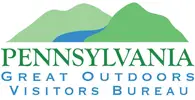WARREN, Pa. – The U.S. Department of Agriculture Forest Service encourages the public to plant native species in their gardens this spring.
(Pictured above: Non-native honeysuckle with spring growth in a stand of hardwoods without leaves. USDA Forest Service photo)
Incorporating native wildflowers, shrubs, trees, vines, and grasses into landscaping helps a diversity of wildlife, and provides benefits to the soil, water, and air quality. A list of plants native to the Northeast region can be found on the Xerces Society’s website.
Non-native invasive plants are species living outside their natural ecosystem, likely to cause harm to the economy, environment, or human health. These plants cause the displacement of native species by depriving them of vital nutrients. Non-native plants also lack the nutritional value native animals need to thrive.
For example, birds such as the Cedar Waxwing and Northern Flicker have experienced color alterations to their feathers from eating non-native plants. This color change can make birds less likely to breed, which could lead to a dwindling population. To learn more about the impact of non-native plants on the Northern Flicker, visit the National Audubon Society’s website.
 Monarch butterfly perching on a native black-eyed susan USDA Forest Service photo by Amy J. Lesher
Monarch butterfly perching on a native black-eyed susan USDA Forest Service photo by Amy J. Lesher
As green begins to return to the landscape, be aware that several plants that are first to grow are non-native invasive species. Some common invasive species include bush honeysuckles, multiflora rose, privet, Bradford pear, Norway maple, and barberry. If you find an invasive species, learn how to report it on the Pennsylvania Department of Agriculture’s website.
If you have questions, contact April Moore, Allegheny National Forest’s Non-native Invasive Program Manager, at april.moore@usda.gov or 814-728-6186.


